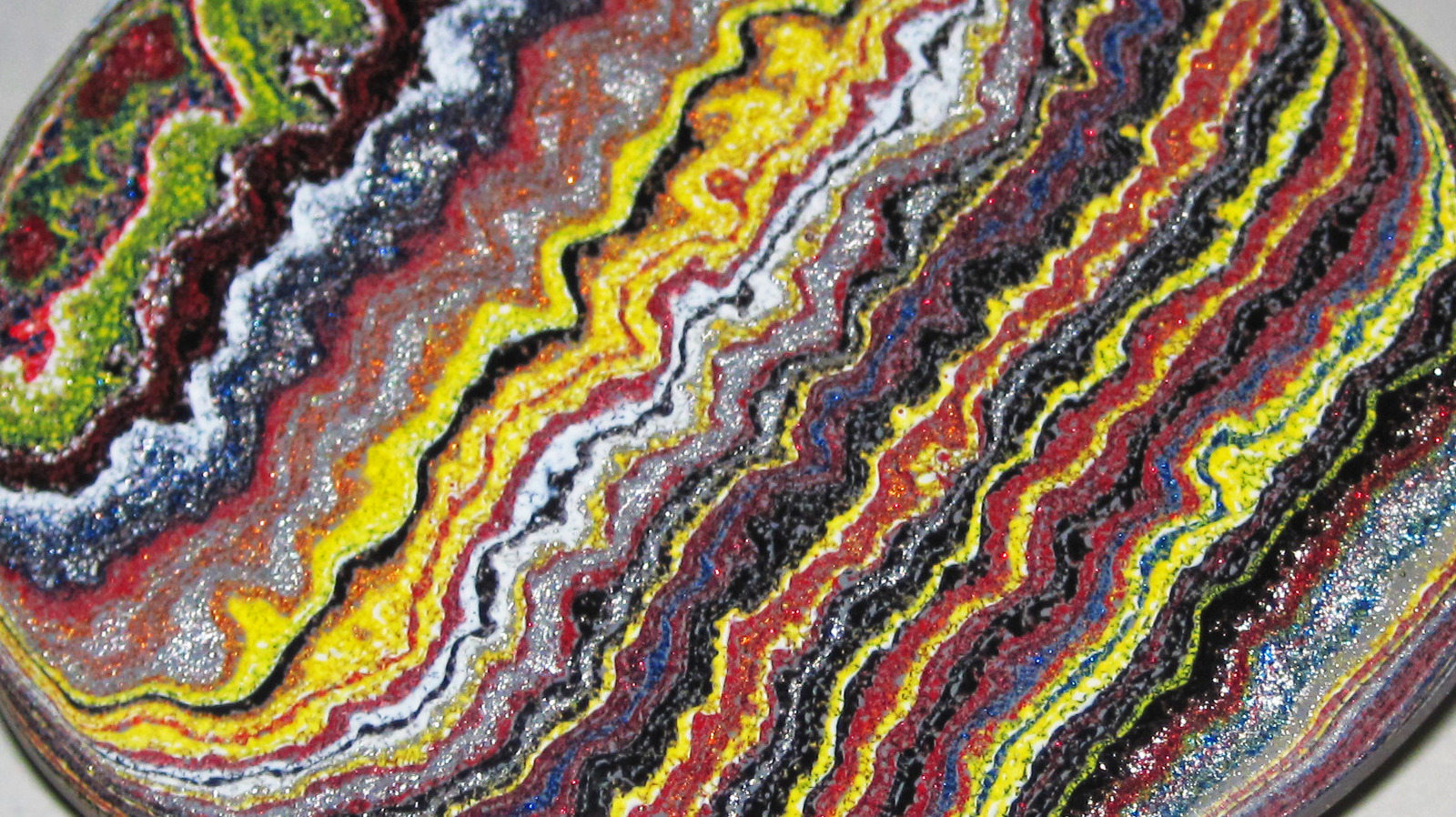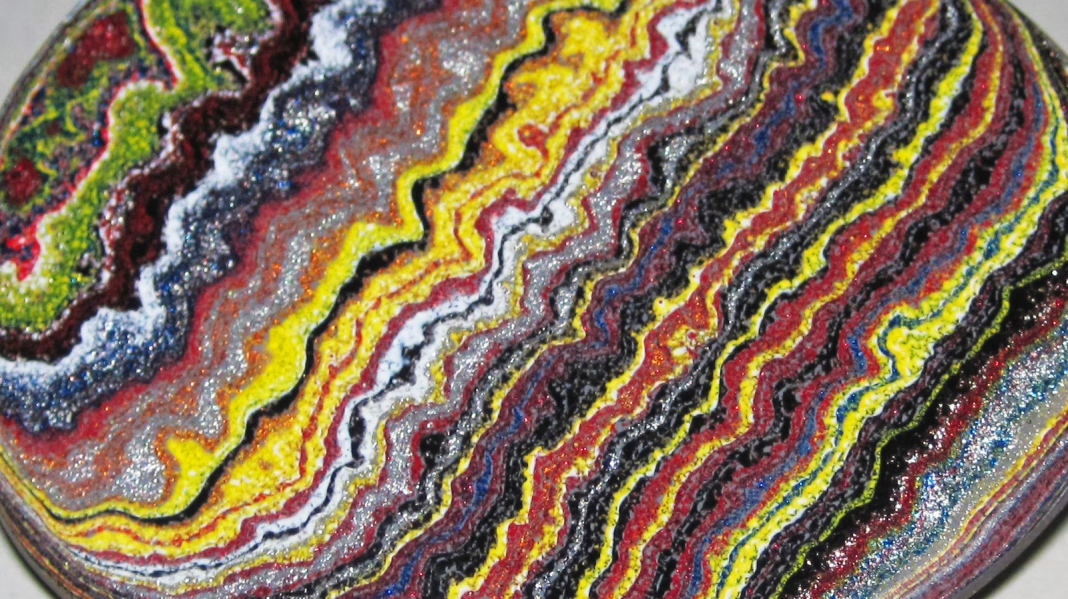What Exactly Is Fordite and Why Are People Fascinated By It?
Ever heard of fordite? If not, you’re in for a treat. Fordite, sometimes called Detroit agate, isn’t a mineral or a gemstone—it’s actually a byproduct of old-school car manufacturing. Decades ago, when cars were spray-painted by hand in factories, layers upon layers of colorful paint would build up on the equipment and surfaces near the assembly lines. Over time, these hardened paint deposits became thick, vibrant slabs. Workers would sometimes chip them off, revealing mesmerizing swirls and stripes that looked almost like precious stones.
The result? Pure magic. Each piece of fordite is a slice of automotive history, capturing the wild colors and styles of classic cars from the 1940s through the 1970s. It’s no wonder artists and collectors are obsessed.
How Did Fordite Go From Factory Waste to Coveted Art?
Back in the heyday of Detroit’s auto industry, nobody thought much about the paint overspray that accumulated in the paint bays. It was just waste—something to be scraped off and tossed. But as car enthusiasts and artists started noticing the unique patterns and colors, they realized these chunks of paint were more than just industrial leftovers. They were accidental masterpieces.
As word spread, jewelers and craftspeople began cutting and polishing fordite, transforming it into stunning cabochons, pendants, and even sculptures. Today, fordite jewelry is a hot commodity, especially among those who appreciate both art and automotive history. Some pieces can fetch hundreds of dollars, depending on the colors and patterns.
What Makes Each Piece of Fordite Unique?
No two pieces of fordite are exactly alike. The colors and layers reflect the paint jobs of the cars being made at the time—think cherry reds, metallic blues, avocado greens, and even the occasional wild purple or orange. Because the paint was applied in multiple coats, you’ll often see vivid stripes and swirls, almost like the rings in a tree trunk.
The age of a fordite piece can sometimes be guessed by its color palette. For example, the pastel hues of the 1950s or the bold, psychedelic shades of the late 1960s. It’s like holding a time capsule in your hand.
Can You Still Find Authentic Fordite Today?
Here’s the catch: true fordite is getting harder to come by. Modern car factories use more efficient painting methods—robots, powder coating, and closed systems—so there’s almost no overspray building up anymore. Most of the fordite on the market comes from old factories that have long since shut down or switched processes.
This scarcity has only increased its value. Collectors are always on the hunt for new sources, and some even scour old factory sites for hidden stashes. If you’re looking to buy a piece, make sure you’re getting the real deal—there are imitations out there, but nothing matches the authentic layers of vintage automotive paint.
How Do Artists and Jewelers Work With Fordite?
Working with fordite is a bit like cutting stone, but with a twist. The material is surprisingly tough, thanks to all those baked-on layers, but it can also be brittle. Artists use lapidary tools to slice, shape, and polish the paint into smooth, glossy surfaces that show off the wild patterns inside.
Some jewelers love to leave the edges rough, highlighting the material’s industrial origins. Others go for a high-gloss finish that makes the colors pop. Either way, every piece tells a story—not just of the car it once coated, but of the era and the people who built it.
Why Does Fordite Resonate With So Many People?
There’s something deeply nostalgic about fordite. For car lovers, it’s a direct link to the golden age of American manufacturing. For artists, it’s a reminder that beauty can be found in the most unexpected places—even in factory waste. And for anyone who loves a good story, fordite is a conversation starter, a wearable piece of history, and a testament to creativity.
Recent exhibitions have even featured fordite alongside traditional gemstones, blurring the line between art, craft, and industrial relic. According to a 2023 survey by the Gemological Institute of America, interest in alternative materials like fordite has grown by over 30 percent in the past five years, especially among younger collectors who value sustainability and unique backstories.
What Should You Look For If You Want to Own a Piece of Fordite?
If you’re thinking about picking up a piece of fordite, pay attention to a few key details. Look for vibrant, well-defined layers—these usually indicate older, more authentic material. Ask about the source, if possible; pieces from famous factories like Ford’s River Rouge or GM’s old plants tend to be especially prized.
Don’t be afraid to choose something that speaks to you, whether it’s a wild swirl of colors or a more subtle, layered look. And remember, because fordite is essentially paint, it’s best to keep it away from harsh chemicals or prolonged exposure to sunlight, which can fade the colors over time.
The Big Takeaway
Fordite isn’t about perfection—it’s about smarter adjustments. Start with one change this week, maybe swapping out a piece of jewelry for a fordite pendant or just learning more about its story, and you’ll likely spot the difference by month’s end. Sometimes, the most beautiful things come from the most unexpected places.


